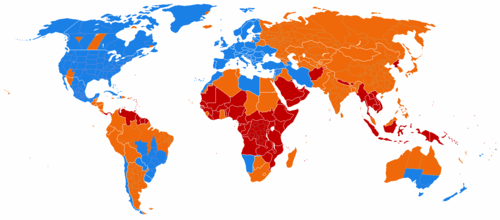Time clock standards
The western time standards dividing the year into 12 months, the day into 24 hours or 12 hours AM and 12 hours PM, the hour into 60 minutes and the minute into 60 seconds derived from the Mesopotamia[1] using the sexagesimal[2] or base 60 numeral system.
- Note:
- The base 60 systems is a highly composite number as 1, 2, 3, 4, 5, 6, 10, 12, 15, 20, 30 and 60 are factors.
Contents
The length of a day
Defined in ISO 8601 the day consists of 24 hours consisting of 60 minutes of 60 seconds. giving a total of <math>24 * 60 * 60 = 86.400 </math> seconds a day. With the Earth rotation slowing down there are two possible ways to make the clock time match the rotation of the Earth.
- Decreasing the length of the second to match 86400 second/day
- Introducing a leap second[3] when needed.
The length of a second
The second has been used since approximately year 1000, first used by the Persian scholar Al-Biruni[4] as the second division of 60 of the hour. From 1960 the length of second was defined as 1/86.000 of a mean solar day. To day it is defined as the duration of 9.192.631.770 periods of the radiation corresponding to the transition between the two hyperfine levels of the ground state of the Caesium 133 atom[5].
The length of a second is constant, based on the Caesium atom, so it is necessary to use leap seconds to synchronize the mean solar day to the clock time.
Time Zones
DST or summer time
Daylight saving time (DST)[6]—also summer time in British English— is the practice of advancing clocks during the lighter months so that evenings have more daylight and mornings have less. Typically clocks are adjusted forward one hour near the start of spring and are adjusted backward in autumn.
Country DST
Each country decides for itself whether to use DST or not. DST rules can be changed as each county see fit.
Comparing times between time zones
To compare times between countries it is necessary to know the current DST rules for each involved country to agree on a exact common time. To compare times in a historical perspective it is necessary to know the historic DST rules for each involved country. IANA[7] tries to keep track of a historic database over DST rules[8]
